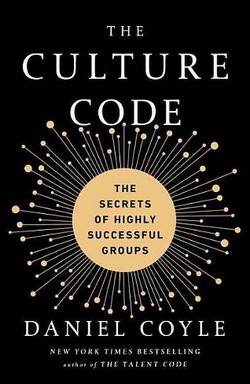“I don’t expect anyone else to be as excited as I am. Even with copious amounts of caffeine.”

I still laugh about this quote from my conversation with Airon Black, a product marketing manager for BigCommerce in Austin, Texas. As an extrovert working among mostly introverted engineers and architects, she brought an interesting perspective to the idea of introvert/extrovert relationships in many engineering offices.
While introverts and extroverts seem to be opposites, like yin and yang from Chinese philosophy, the two personality types bring complementary differences to the table. In a balanced and harmonious state, these two groups of people can function very well together.
Airon told me how she finds that harmony and balance with her office team.
First, Look Inside Yourself, Extrovert
“One of the things that really helped me a long time ago was to look at my own personality,” said Airon.
Whether you use DISC, Color Code, Enneagram, Myers-Briggs, or some other personality assessment, these tools will help you take an introspective look at yourself. As a bonus, if you know your Myers-Briggs type, you can cross-reference it with which fictional characters you are most like from Harry Potter to Star Wars and The Office to Breaking Bad.
Analyzing your personality will give you insights into yourself and how others perceive you. Understanding yourself also ensures that you know how your strengths relate to others.

“As an extrovert, I am the first person to shoot my hand up and ask a question to get clarifications,” said Airon. “I can speak up, but do I always need to be the one to speak up? I could overshadow someone who is trying to break out of their introverted bubble.”
Understanding yourself and your impact on others, whether they are introverts or not, is a key step in building good relationships. Using meditation or mindfulness can also help you look inward and get a better understanding of yourself.
Next, Understand the Inner Introvert
“Everyone has a bubble around them,” Airon said. “For some, those are sacred.”
Comparing personality type to bubbles surrounding people, Airon talked about how her bubble is transparent and flexible. Others, though – especially introverts – have more rigid bubbles.
“An engineer’s bubble might be translucent, but there will probably be some solidness to it. It might be pliable, but you can’t get through it. When they let you in is up to them.”
By comparison, she said that her bubble, probably a typical extrovert’s bubble, is far more transparent and open.
To get to know and understand your introvert coworkers better – to get inside their bubble – talk to them away from your workspace. Start out in the office where it’s safe. Maybe over coffee. Offer positive feedback. Gradually move the conversation outside work and develop deeper relationships.
In the office, give them small praise on a frequent basis. Make it specific praise rather than general. Instead of “you were great in the meeting today,” tell them, “I appreciated how you stepped in and gave us those technical specs in a way that the sales team could understand them. That helped make our case for the additional budget.”
“People like specific recognition,” said Airon, “not blanket recognition.”
Watch them and take cues from the things they say and even the t-shirts they wear. Do a little research and dig into their hobbies and interests. Comment on those and engage with the introverts in your life.
An aside from Tracy’s reading list: Author Daniel Coyle wrote a fascinating book titled The Culture Code: The Secrets of Highly Successful Groups. In it he describes how Gregg Popovich, coach of the San Antonio Spurs, connects with his players by digging into their interests and getting to know them.
Finally, Be an Advocate
“As an extrovert, you’re always mouthy. It’s important to use that mouth for good.”
When you’re the extrovert in a room of introverts, take up their cause and help them get involved and engaged.
If an introvert is getting talked over, make sure you open the floor and give them the chance to speak. Do this carefully, though. Don’t put them on the spot, rather, ask them if they have something to contribute. You could start by quietly, and without drawing attention to them, invite them to share their ideas.
“As a leader, as an extrovert, you have to put yourself into their shoes quite a bit,” said Airon.
Often, being that advocate in the workplace comes down to looking for similarities rather than differences. For example, while you approach meetings differently, you might both be wildly passionate about the project you’re working on together. Of course, the extrovert may show that passion with cheers and clapping while the introvert exudes passion with just a smile.
Finding those commonalities builds relationships and allows you to put yourself into an introvert’s shoes and champion their cause.
“I will always be the advocate for the introverts on my team.”
Final Thoughts
Working well with introverts boils down to being observant.
Along with her career, Airon is also a certified CrossFit instructor at Heroes CrossFit in Cedar Park, Texas. Her work at the office and her work at the gym compliment each other as she has lots of opportunities to observe people.
“In CrossFit, you have to learn to read people and adapt,” said Airon. “Then you have to scale your approach. That’s helped me in my daily world.”
“One of the main things they teach you in CrossFit is that when you work to help someone improve, you pick one thing to work on. There may be ten things they’re not doing well but you just pick one. Then move on to the next thing and the next thing.”
When you’re working to understand yourself, pick one thing to work on. When you’re working to build a relationship with an introvert, pick one thing to work on. When you’re working to become that introvert’s advocate, pick one thing to work on.
Then another. And another. And so on.
Observe. Adapt. Improve. Repeat.

Author: Tracy Thomason
Agile project manager by day, craft beer drinker by night, and avid reader anytime I can get 5 minutes alone with my Kindle.
More posts by Tracy
Featured photo by Free-Photos from Pixabay


